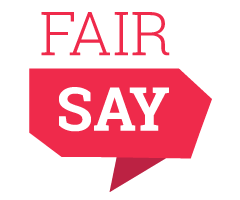Suggestions and advice from the Campaigning Forum email list on that campaigning fundamental – how do you create a compelling call to action, and how do you reach people who might respond to it?
Getting people to sign your petition
- “Make the impact and theory of change clear. i.e.
- Outline the current problem/issue
- Illuminate the current opportunity
- Explain how the individual’s involvement will clearly contribute to a winnable success”
- “Make sure your goals are winnable; otherwise they (and subsequently the legitimacy of your ask of the supporter) will ring hollow.”
- “Say what you will do with the signatures (when, how and to whom will you deliver the signatures)”
- “Just copy Avaaz, they’re great at this!
- Test, tweak and optimize the layout, text and image (using something like google optimizer, watching people try to sign the petition is also good)
- Progress bar showing how close to goal
- Limit the amount of information people need to provide
- Give it urgency – why do they need to act now?
- Give it an image – so people can picture the change
- Have a genuine reason – people can tell if signing will make an impact or if you’re just collecting email data”
- “Try and keep everything above the fold on an average sized screenHave the form on the top right (again this is where people’s eyes are drawn to)
- Don’t have any outbound links (you probably have to have privacy policy, but have only that), no link to donate or to your homepage. You want people to take action, so don’t distract them. https://en.wikipedia.org/wiki/The_Paradox_of_Choice:_Why_More_Is_Less
- Keep your petition short – one sentence if possible – don’t give people a list of things they can disagree with
- Have Facebook and Twitter share buttons on the page
- Make your submit button big and bright
- Have the minimum number of fields on your form possible (think what you want to do with the data after)
- After submitting, take people to a page where you encourage them to email their friends asking them to take action with either a form or an address book importer.”
Comments and counters: social proof
- “People are sociable and want to be part of a movement, so… “20,000 have already signed.. .you still have time to add your name…”
- “The signer’s comments constitute a unique message that can be delivered, via email and other ways, to the petition’s target(s). This increases the likelihood that the target(s) may actually pay attention to the signer’s personal viewpoint; and
- If your petition tool allows prior signers’ comments to be displayed on the petition landing page, then these comments will inspire subsequent signers to follow through and join in signing the petition — reducing the abandonment rate of the petition.”
Spreading the word
- “email – your list, list buys, partnerships, etc
- tweeting / facebook / other (can be useful if your audience has a specific site or place online they gather)
- advertising – google, facebook
- viral – video or some other thing on the petition that gets people to pass it around
- follow up ask – “spread the word”, on the thank you page
- coalitions – change.org and care2 are good, can also involve other groups”
- “Might be obvious, but I usually start off by writing a blog post which I link with the action and then spread the word on Facebook, Care2 and Twitter. …targeting groups has worked very well for me. I post a few lines and the link on FB (in my case animal) groups or pages. On good days I get about 50 percent of the hits through these links – this might be down to the issue, (bullfighting), though.”
- “Making use of high profile supporters who tweet is always good too! And targeting key online groups/networks who have an interest in the subject your campaigning on (eg medical groups, student nurses etc)
- “Mini challenges like forward to 10 friends/re-tweet/re-post etc can work too.”
Your emails
Some advice on your emails (with the caveat that what works for one audience may not work for another – test!)
- “Do subject line tests (for some reason shorter ones tend to work better, with one word seeming to do the best – it seems counter-intuitive but we’ve been testing it for a couple of years every week and one word almost always wins, we think it’s because they stand out visually in your inbox)
- Keep your email as short as possible, and then try and make it shorter again
- Have one simple ask
- Make your ask bold
- Try a box in the top right of the email with the ask also in it as this is where people’s eyes are drawn to on a screen
- Use persuasive words in your ask “You should do xxx because yyy”
- Clearly explain what the problem is and why now is the time to act
- Explain why the action you are proposing will make a difference. If it’s a petition how will it be delivered? How will you make sure the target actually sees it? Can you give examples of this working in the past?
- After a few days send the email again to those who didn’t open it but with a different subject line and to those who did open it tell them how successful it has been and that if they can “just forward the email” to their contacts it will be even more successful
- In the from name of the email use a person’s name and not just the name of the organisation as it makes it seem more personal and less like advertising”
Urgency can help you
“Deadlines are always good – “… just two days left to….” “
“Using key countdown dates as moments to push for signatures can create more of a sense of urgency around it.”
T E S T
“Split test your emails and use website optimizer on your landing page, ‘best practices’ don’t always work for every audience.”
This article summarises a discussion on the eCampaigning Forum email list. Thanks to everyone who contributed.

